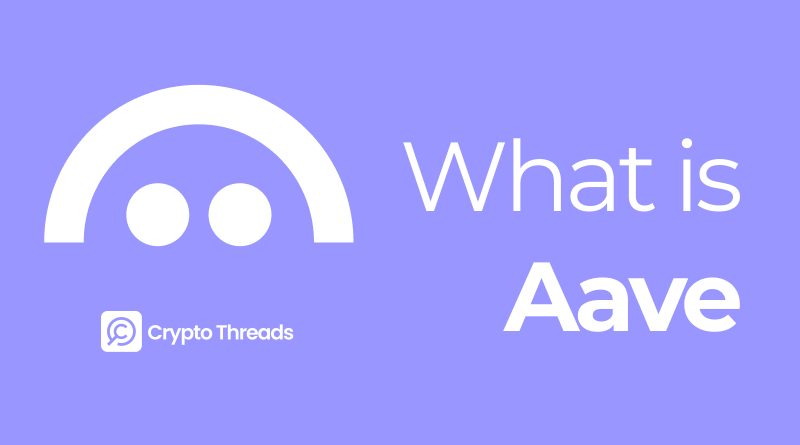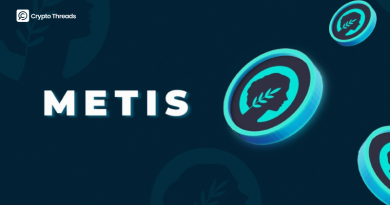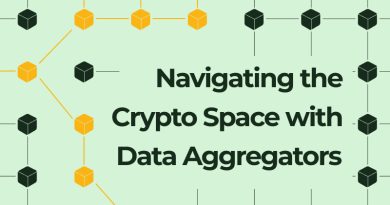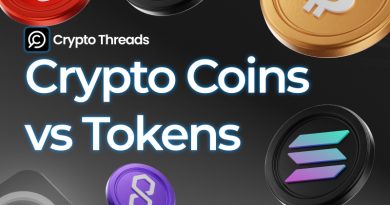What is Aave? The leading lending protocol in the crypto market.
What is Aave?
Aave is a decentralized lending protocol that allows users to borrow and lend various crypto assets such as ETH, WBTC, USDT, and more through liquidity pools. Originally built on Ethereum, Aave has since expanded to multiple other blockchains including Avalanche, Arbitrum, Optimism, Base, Polygon, and others.
The primary goal of Aave is to connect borrowers and lenders through liquidity pools on the protocol. When a lender deposits supported crypto assets into a liquidity pool, they earn interest based on the lending duration, with rates that can fluctuate according to market conditions. Conversely, borrowers deposit supported crypto assets as collateral into the pool and take out loans in various assets, along with interest that must be repaid.
History of Aave’s Formation
How Aave Works
Lending
Users deposit supported crypto assets into liquidity pools and receive corresponding aTokens (for example, depositing ETH yields aETH). These aTokens accrue yield based on the duration of the deposit, with interest rates that vary according to market conditions. To mitigate liquidity issues, Aave has established liquidity pools on platforms like Balancer and Uniswap, allowing lenders to withdraw their funds at any time.
Borrowing
To borrow, users deposit supported crypto assets as collateral into a liquidity pool and receive an aToken that represents their loan, along with the associated interest obligation. Aave employs an overcollateralization mechanism, requiring borrowers to provide collateral that is 50-75% or more of the borrowed amount. This approach protects the protocol’s funds in case a borrower fails to repay, as borrowers must maintain the required collateral ratio—failure to do so can lead to automatic liquidation of the collateral.
New Features in Aave V3
Efficiency Mode (eMode)
This feature allows users to achieve a higher borrowing capacity using their collateral, provided that the collateral and the borrowed asset have a correlated price movement (for example, with stablecoins).
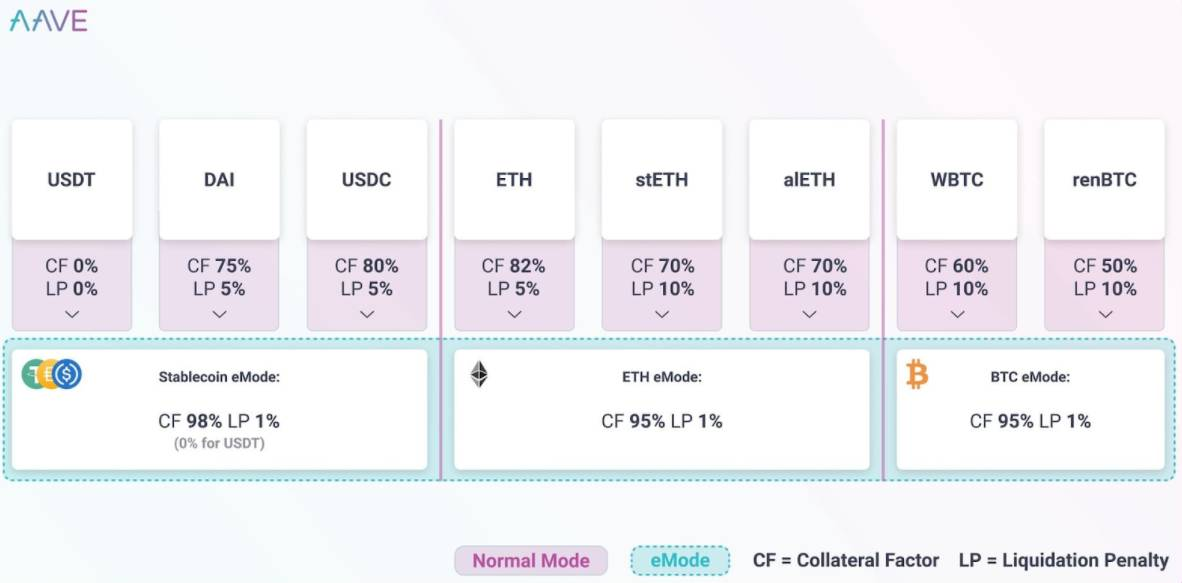
eMode Mechanism in Aave V3
Isolation Mode
This mechanism is applied to new assets added to Aave that are still under observation and are considered to carry higher risk. Each of these new assets is allocated to its own separate pool, known as an Isolated Pool. If an asset or pool encounters risk, it will not impact the entire protocol. Additionally, when an asset is designated with Isolation Mode, users are limited to borrowing only stablecoins approved by Aave’s governance, and there is a fixed debt ceiling imposed on these loans.
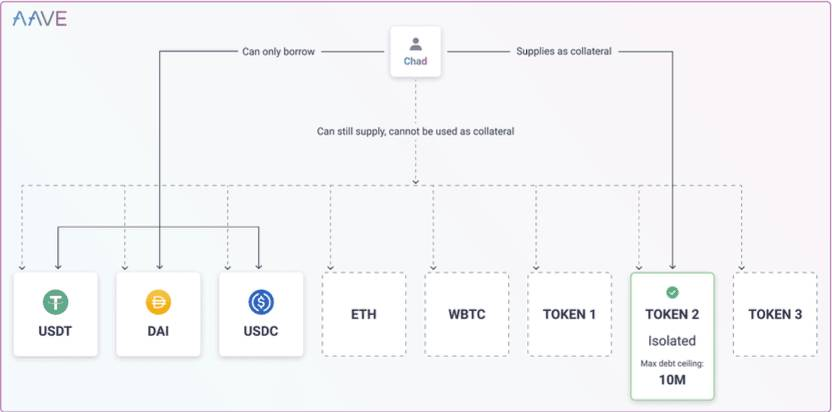
Isolation Mode Mechanism in Aave V3
Flash Loan
Flash Loan is a mechanism that makes Aave unique by allowing users to borrow instantly without any collateral. A flash loan is executed on the condition that the principal amount is repaid within a single transaction. If the loan is not repaid to the pool in time, the transaction is reversed to ensure the safety of the funds in the reserve pool, preventing any risk. Flash Loans incur a fee of 0.09% and are completed in approximately 13 seconds.Flash Loans are designed for developers to build tools that require arbitrage, refinancing, or liquidation. For example, if a user wishes to borrow Maker but the price of the collateral drops—risking liquidation—they can use a Flash Loan to repay the Maker loan and reclaim the collateral. The collateral can then be sold to repay the Flash Loan, thereby avoiding Maker liquidation without injecting additional capital.
Rate Switching
Aave offers a unique feature that allows borrowers to switch between fixed and variable interest rates. Given that DeFi interest rates tend to be highly volatile, estimating long-term borrowing costs can be challenging.
There are two exceptions where the fixed rate may change:
Credit Delegation (CD)
Credit Delegation is a mechanism that allows users to deposit funds on Aave to earn additional yield by delegating their credit limits to trusted borrowers. Through this process, users earn interest without directly borrowing via Credit Delegation. Borrowers receiving a credit limit can withdraw assets from a Special Credit Delegation pool and borrow them. To safeguard the funds, the involved parties use an application called OpenLaw to sign agreements regarding the loan terms. The primary goal of Credit Delegation is to help users, organizations, and exchanges access DeFi liquidity. Delegators can earn extra yield from Credit Delegation in addition to the yield from standard lending.
Portal
Portal is a new mechanism introduced in Aave V3 that allows users to seamlessly transfer assets between different blockchain markets. Aave has partnered with cross-chain bridges such as Connext and Hop Protocol to enable asset movement across various networks. For instance, users who borrow or lend ETH and receive aETH on Ethereum can also access aETH on chains like Arbitrum or Optimism.
Navigating the Aave’s Interface
Dashboard
This interface displays the crypto assets that users are lending or borrowing across multiple blockchains, available in both V2 and V3 versions. Additionally, users can view the APY for lending or borrowing.
Market
This is the interface that displays all the crypto assets supported by Aave. Users can lend or borrow across various blockchains, available in both V2 and V3 versions. Here, they can also track the APY for lending or borrowing a specific asset.

Market Feature Interface on Aave
Users select a specific asset and choose “Supply” to lend or “Borrow” to take out a loan by collateralizing their asset. Aave also categorizes assets into two mechanisms—eMode and Isolation Mode—for users to reference when borrowing.
StakeThis is where users can stake their AAVE tokens into the Safety Module and receive stkAAVE from the protocol. If a shortfall event occurs, Aave will sell up to 30% of the AAVE in the Safety Module to cover losses. Conversely, users earn Safety Incentives, with 550 stkAAVE distributed daily. When withdrawing AAVE, users must wait 10 days before redeeming AAVE from their stkAAVE to prevent any negative impact on the overall protocol.
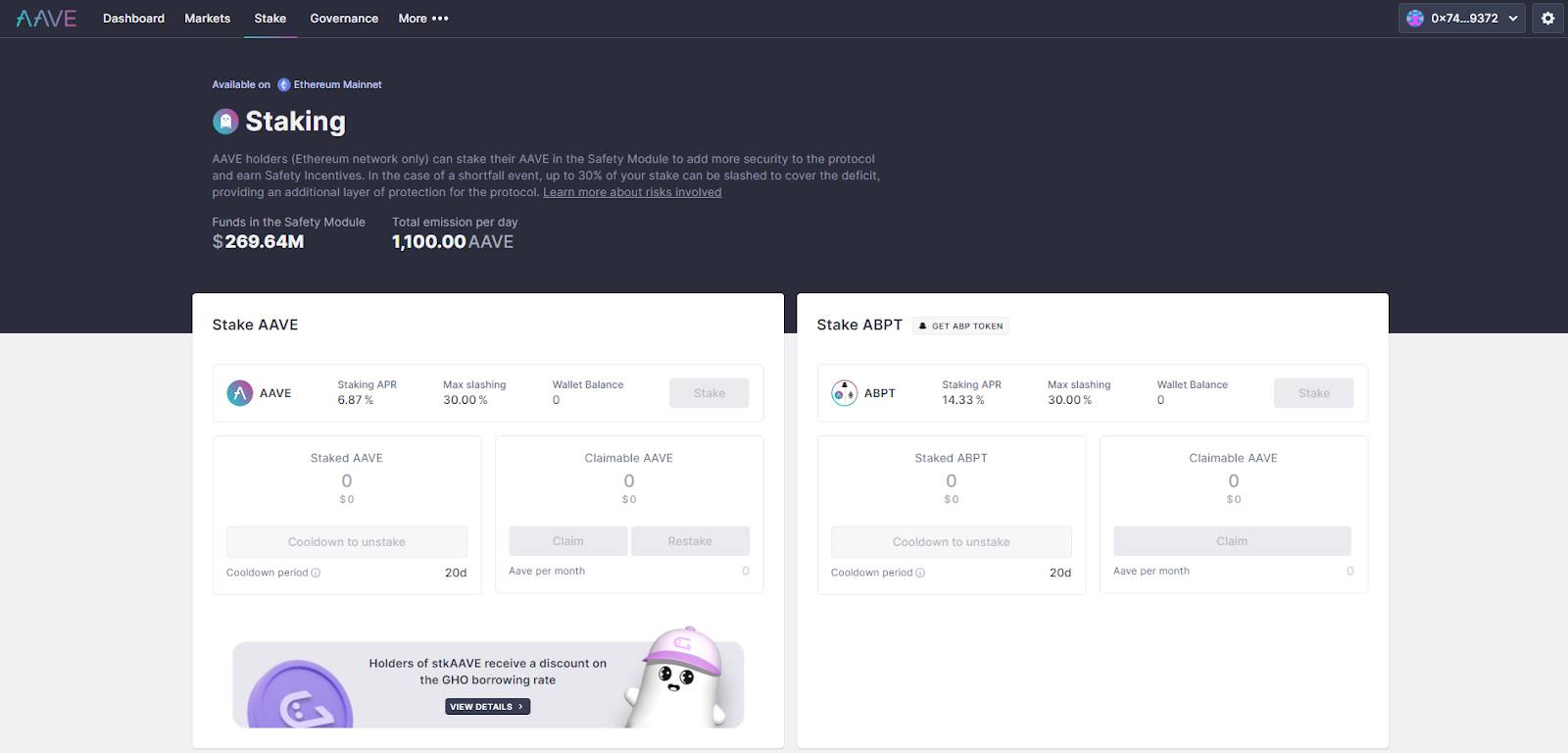
Staking Feature Interface on Aave
Governance
This is the section where proposals are displayed, allowing AAVE token holders to vote on decisions affecting the protocol.
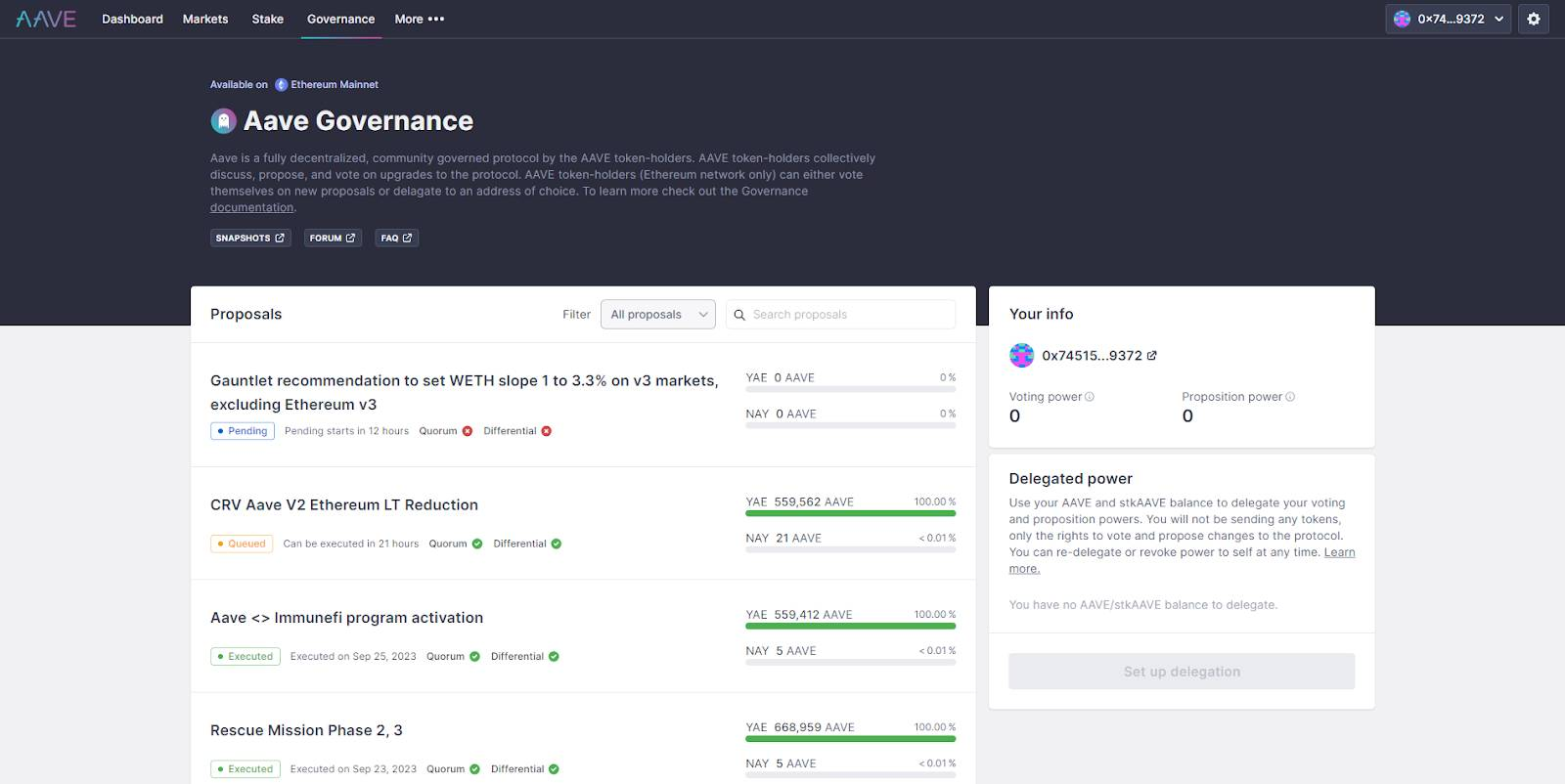
Governance Feature on Aave
Additionally, BDG Labs—a Web3 product development unit—is integrating Chainlink’s CCIP into Aave to ensure that the cross-chain governance system is highly secure in the future. This integration will enable Aave to easily expand to more blockchains and execute critical operations, such as governance, using a highly secure solution.
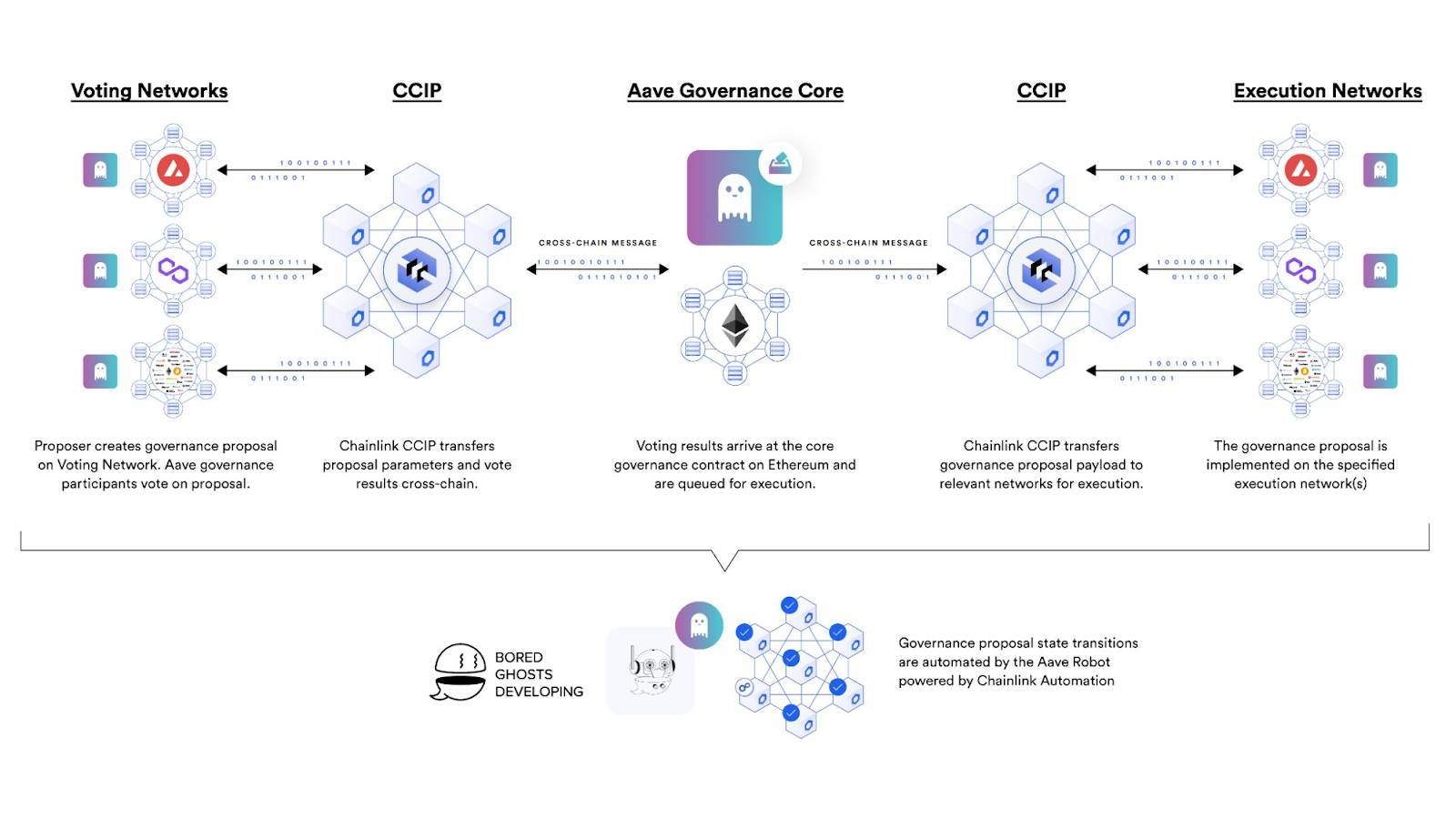
Aave’s Governance Model with CCIP Integration
Aave is a decentralized lending protocol that enables users to borrow and lend a variety of crypto assets such as ETH, WBTC, USDT, and more through liquidity pools. Aave continues to evolve, with the launch of V3, the introduction of the GHO stablecoin, and support for a range of assets like Liquid Staking Tokens (LST) and Real-World Assets (RWA) to facilitate lending and borrowing activities.
Through this article, you should now have a basic understanding of the Aave project to help you make your own investment decisions.
